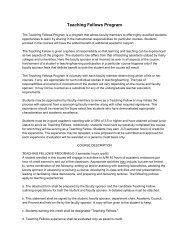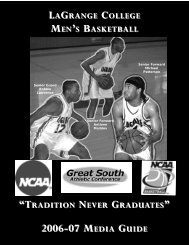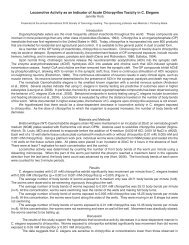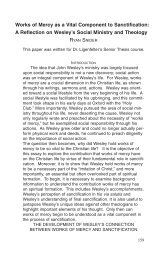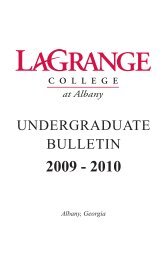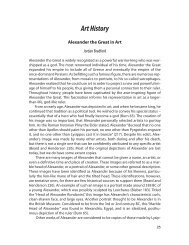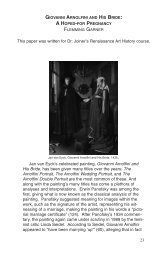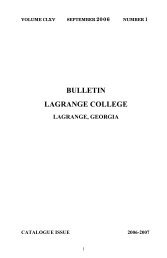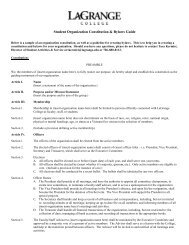The Speed of Light: Historical Perspective and Experimental Findings
The Speed of Light: Historical Perspective and Experimental Findings
The Speed of Light: Historical Perspective and Experimental Findings
You also want an ePaper? Increase the reach of your titles
YUMPU automatically turns print PDFs into web optimized ePapers that Google loves.
TRENT SCARBOROUGH AND BEN WILLIAMSON<br />
splitter. From the microscope on the beam splitter, the spectral<br />
field could be observed, <strong>and</strong> thus the image point (See<br />
Appendix 3 for diagrams).<br />
After meticulously aligning the equipment, we were ready to<br />
begin. <strong>The</strong> emission filtering <strong>of</strong> the beam splitter produced the<br />
unique pattern <strong>of</strong> a small, sharp, bright dot (our image point)<br />
adjacent to a bright <strong>and</strong> equally sharp b<strong>and</strong>, quite separate from<br />
the rest <strong>of</strong> the apparent emission in the spectral field. <strong>The</strong> rotating<br />
mirror was activated <strong>and</strong> the speed was increased to<br />
approximately 600 rotations per second (rev/s) to allow the<br />
motor to warm up. After three minutes, the speed was increased<br />
to 1 000 rev/s <strong>and</strong> then the speed to its maximum velocity,<br />
approximately 1 500 rev/s.<br />
As the mirror rotated continuously at high velocity, a laser<br />
pulse was generated which resulted in a strange phenomenon:<br />
the incident light strikes the rotating mirror at a different angle<br />
than the reflected light thus, allowing measurable displacement<br />
with the image point to be seen. <strong>The</strong> small dot in the spectral<br />
field was displaced <strong>and</strong> measured with a micrometer. This<br />
process was repeated at least twice for each direction (clockwise<br />
<strong>and</strong> counterclockwise), <strong>and</strong> the results were tabulated.<br />
Using these results, we were able to determine a value for the<br />
speed <strong>of</strong> light <strong>of</strong> 2.992 x 10 8 m/s for the speed <strong>of</strong> light in air. 12<br />
<strong>The</strong> value found is 0.198% below the currently accepted value.<br />
Foucault’s original experiment produced a value <strong>of</strong> the speed <strong>of</strong><br />
light, c = 2.99792 x 10 8 m/s, approximately 1% lower than the<br />
modern value. It should be noted that in this experiment the<br />
speed <strong>of</strong> light is measured in air, the value <strong>of</strong> which mathematically<br />
should be approximately 0.03% lower. <strong>The</strong> greater precision<br />
in our results stems from several factors, almost all <strong>of</strong> them<br />
due to our equipment. We were able to use a laser light source,<br />
where Foucault had to use st<strong>and</strong>ard light bulb. We were also<br />
able to electronically control <strong>and</strong> measure precisely our rotation<br />
speed, whereas, Foucault did not have the use <strong>of</strong> any modern<br />
electronics.<br />
191




